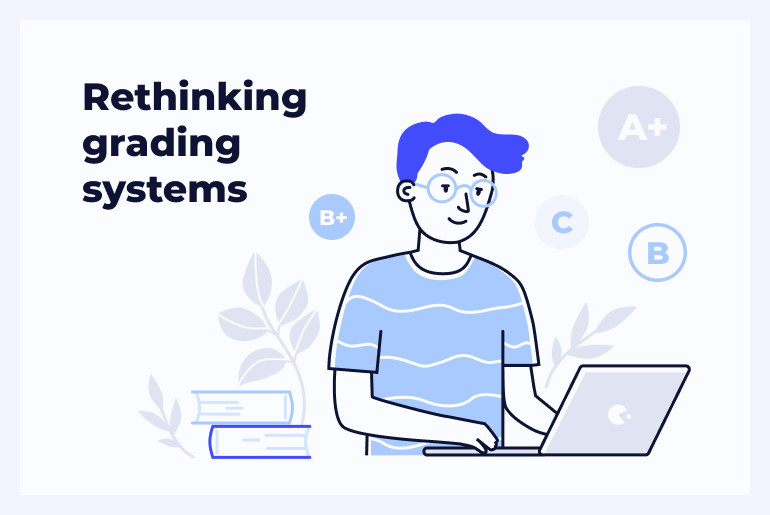To help you forge through the uncharted territories of remote learning more easily, we interviewed the leading experts in various domains of education. They are sharing their stories caused by this abrupt switch to 100% online in education to let you know we’re in this together. Also, they’ll be sharing some tactics and tools that have helped them during the days of social isolation and remote teaching.
We are willing to reinforce one another as the world continues to change by exchanging experiences and knowledge. So, find some helpful tips for yourself as well.
Speaker 1: Mary Burns
Mary is a pedagogy and technology advisor. She helps countries, states as well as school districts and universities with technology planning, digital learning, instruction, curriculum development, and more.
Mary shared her thoughts on how this pandemic has impacted various aspects of education:
The COVID-19 virus has really laid bare the digital divide between poor and wealthy students, rural and urban students, and in many parts of the U.S. between white students and students of color. Providing robust, high-speed Internet access to all households really has to become a national imperative because of future disruption caused by pandemics, weather emergencies, and unforeseen disruptions.
Along with this more general digital divide, the COVID-19 virus has really exposed the divide between school districts and schools that have online learning and those that don’t. We have to do both short-term emergency work in online learning (getting content online for students) and long term planning of creating an online system. This crisis really hits home that school districts need to have both an online and face-to-face system of teaching and learning.
I’d add one concern about online learning as it is now happening: Everyone is rushing to “put courses online.” The end product won’t be pretty in the majority of cases. Those who are new to online education may come away with an unfavorable impression of online learning because of poor quality because of a lack of time to plan and design. I’d just emphasize that the teaching we’ll see online is not true online learning; it’s emergency learning online.
Make sure to go get to know Mary Burns.
Speaker 2: Amy Hollier
Amy is the Head of Blended Learning at Heart of Worcestershire College, UK, and a remote learning enthusiast:
What transformations has your institution made to enable e-learning?
An intensive period of staff training has been implemented in the use of digital technologies available to staff. Quick start and user guides have been circulated with additional guidance offered on software and platforms available to staff to access and populate online content with. HoW College is already well established with a very robust digital infrastructure which has helped to enable remote learning. Staff are already used to using communication tools such as Skype for Business and MS Teams. Students too are already used to doing regular blended learning as it is embedded into their timetables so that they are well able to access the VLE and complete online content. The Blended Learning Consortium packages are also embedded and used across the curriculum.
What tools/platforms have you switched to? Are they effective?
Heart of Worcestershire College is a Microsoft Showcase college so we use the Microsoft tools, in particular Microsoft Teams. We use the Blended Learning Consortium interactive, online learning packages and ClickView for video content.
What difficulties are you facing now? Is there any way to overcome them?
Ensuring all students have access to online content as many don’t have data packages to support this, and some don’t have devices. The College is supporting individuals on a case-by-case basis with devices, etc., and also keeping staff from the learning centers available to support students remotely. Some staff needs additional digital support, so our Digital Advanced Practitioner is providing additional support to these staff. Ongoing staff CPD will be provided during the period of the shutdown, so staff continues to feel supported.
Have you already discovered some out-of-the-box methods to handle your increased workload that wouldn’t probably be effective or even acceptable in regular times?
Teaching quality should always be maintained where possible. If we weren’t prepared to use these kinds of methods in normal circumstances then they should be approached with caution at times like this. The main thing is to try and keep things as simple as possible and not overwhelm staff or students. At this point, things don’t need to be technically amazing but they do need to add value to the students, and this can be done through very simple methods of communication. As long as students know you are doing the best you can in challenging circumstances, then they will engage.
How do you overcome misunderstandings from online communication with the users who aren’t advanced?
Always start off by thinking that everyone is at a very basic level of digital competence and then build from there as soon as you know all can participate without missing anything. It is for this reason that it is important to engage with students in a “live” setting at regular points with synchronous teaching and learning episodes. Students will be able to use that time to highlight any issues they may be having. Offer students the opportunity to provide feedback about the experience through discussion forums or email if it needs to be more confidential. Each group of students will respond differently, so try to adapt delivery to what suits that particular group.
What would you advise to make the remote work (of an IT administrator/instructor/ student) really effective?
Have some structure, communicate regularly, and have regular welfare check-ins with staff to avoid them feeling isolated. Provide students with structured content that is broken into smaller episodes. Try and use synchronous and asynchronous methods of delivery so that students have some engagement but also the opportunity to access learning materials at a time to suit them. Use a range of multimedia to present information–offer watching, reading, and listening lists.
What benefits have you managed to recognize in the 100% online learning model for yourself and other members of your institution?
These circumstances have brought digital to the fore and really offered the opportunity to explore different methods of delivery and communication with students outside of the institution. I think we will all have a new, improved approach to teaching and learning digitally as a result of this period of time.
You can talk to Amy Hollier here.
Speaker 3: Jerry Blumengarten
Jerry is a connected educator of more than 30 years of experience, speaker, and author of cybraryman.com, where he catalogs the most helpful and actual info on all things education for instructors, students, and parents.
Jerry provided us with some helpful links to his portal that feature digital learning and homeschooling advice:
To make distant learning work, prepare tutorials on the use of the tech tools you will be using for your instructors and students. This should be done in a step-by-step simple way to avoid any confusion and mistakes. Provide a contact number where you can be reached to answer any questions and to help your students.
Some helpful pages:
Helpful websites for all grade levels and subject areas
Also, go say hi to Jerry Blumengarten.
A friendly reminder!
During the coronavirus epidemics, the Unicheck team is providing all institutions that don’t already have an active license with a free trial of Unicheck for the remaining academic term.
Content Creator at Unicheck
Interested in all things EdTech, Kate digs deep into the dilemmas of contemporary education to deliver a comprehensive picture of how the worlds of tech and academia intersect.





